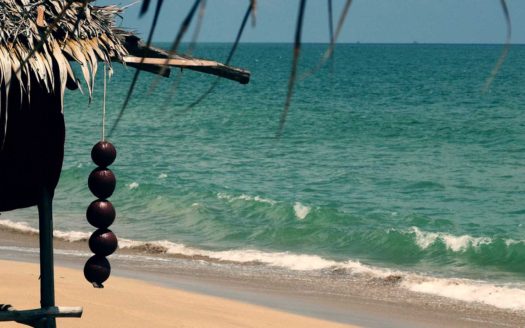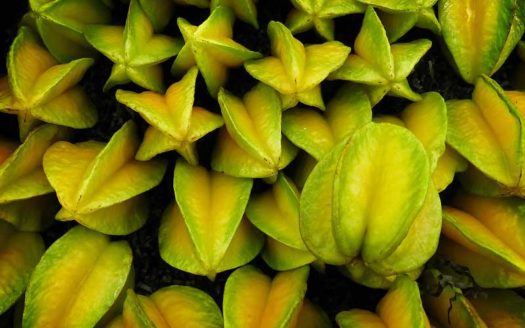Thai Boxing Koh Lanta
THAI BOXING KOH LANTA
Thai Boxing Koh Lanta. The 1000 seat arena is packed with farang and islanders: tuk tuk drivers, vendors roaming the aisles with snacks , business men, hustlers to take your bet, and ringside kingpins. A peculiar music drifts through the stands; cymbals and drums and an instrument you can’t quite place, is it a woodwind…or a wounded accordion?
The Fight
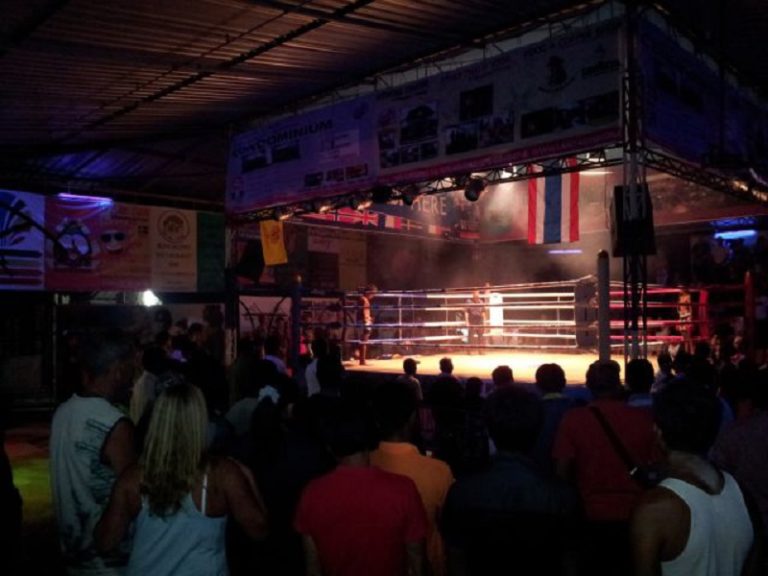
Thai Boxing Koh Lanta
The sound is haunting; as you make your way to your seat it ascends in pitch and tempo until it almost falls into dissonance. Once you’ve settled in and begin to watch the barefoot, sinewy warriors, you see that the music rises and falls with the intensity of the action. Or is it the music that spurs them on?
The “eight limbed” fight is a ferocious flurry of fists, elbows, knees and shins (you cringe every time you hear the thwack of shin on bone). The music flares, the boxers clash, clench and escape. Incense mingles with the scent of limes, fish sauce, sweat and Sangsom.
A fighter falls. In the cleared ring two new fighters ascend the ropes; the music begins again, this time as hymn…the fighters pray—then begins the dance. Spellbound, you are immersed in the ritual of the venerable martial art, Muay Thai. And you thought Koh Lanta was all beach vibe, backpackers and peace signs?
Understanding Muay Thai
Muay Thai is one of the most intriguing martial arts. Grandfather of kick-boxing we recognize some of its techniques: punching, kicking, and clenches. But Muay Thai is an art steeped in tradition, ritual and superstition. According to Bruce Lee, martial arts also have the nature of an art since there is emotional communication and complete emotional expression. Understanding the ritual philosophy of Muay Thai will not only enrich your viewing pleasure or help you grow your practice as a fighter, it will give you insights into your host culture.
An Intricate Dance
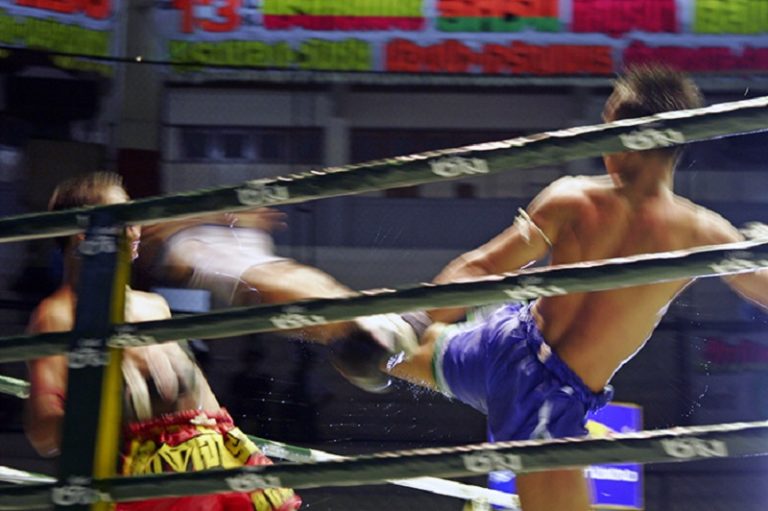
Thai Boxing Koh Lanta
Muay Thai fights begin with a ceremony: Wai Kru Ram Muay, (respectively: respect, teacher, dance, and boxing). It is an intricate dance. Its primary purpose: to show respect to the teacher. A mentor is essential for Muay Thai training as a major part of its fight philosophy is submission and respect.
The Wai Kru commences with both the trainer and boxer in prayer while the trainer places a traditional headband (Mongkon) on the boxer. The boxer moves around the ring preforming movements that showcase his style and agility; prepare the body for fight and indicate his training linage; while offering obeisance to his teacher, religion (generally the Buddha), and the crown.
Orbiting the ring is meant to “seal” it from outside forces. Prayers and chanting during the ritual evoke spirits into the body for assistance and protection. The Mongkon is a ritual object unique to Muay Thai fought in Thailand. The headdress, made of woven silk, represents the fighter’s school and teacher and his family and ancestors.
Placed on the head it aids the fighter in having the proper perspective of humility; he did not make it into the ring alone, but with the help and support of his community. The Mongkon is also a talisman to protect and impart strength and good luck. Muay Thai was originally taught as an aspect of martial training. Often a Nak Muay, a student of Muay Thai, was a soldier.
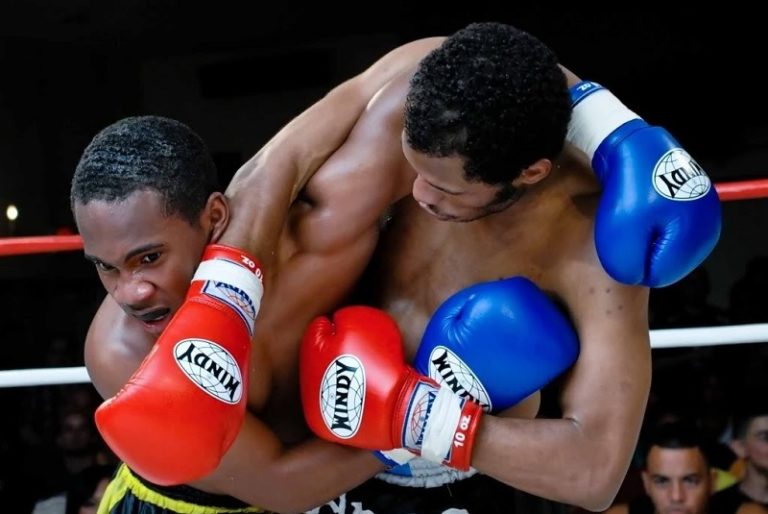
Thai Boxing Koh Lanta
They wore armbands, called Prajioud, made from the hem of their mother’s skirts as a talisman for protection in combat. The arm bands became a stylized part of the Muay Thai costume but have fallen out of favor because they can be prohibitive in the ring.
Nak Muay may also undergo a rigorous tattooing ritual, the Sank Yant (Muay Thai tattoos) are traditionally applied by Buddhist monks with a bamboo stick. They’re believed to grant spiritual power, protection, and good luck.
Sarama, is the hypnotic ritual music played during fights. The instrumentation is the Pi Java (Thai oboe); two drums, the Kong Mong and Klong Kaak; and the appropriately named Ching, cymbal. The music and intensity of the fight play off each other and enhance the spiritual element of Muay Thai.
Consider the description “the art of eight limbs”: fists, elbows, knees and shins- these are the eight points of contact used in Muay Thai.
But scoring is not based solely on punches and kicks landed. A round of Muay Thai is won or lost on the effectiveness and accuracy of the blows, and whether a fighter can move with grace and stability in all directions.
Ring generalship plays a part in the success of one fighter over the other- who dominates the ring and initiates and controls the action? And finally, pure aggressiveness- does a fighter force the action or run from the blows?
As with all aspects of Muay Thai, scoring is a complex process. Koh Lanta offers state of the art training facilities and consummate trainers if you decided you want to learn this rigorous discipline. Both men and women are welcome. Not only is Muay Thai the national sport of Thailand, it has taken its place in the international arena, recently inducted into the International World Games Association. It will be represented in the World games in 2017.
Muay Thai is a captivating representation of the intriguing complexity of Thailand and its people. And Koh Lanta is a perfect place to experience it.


